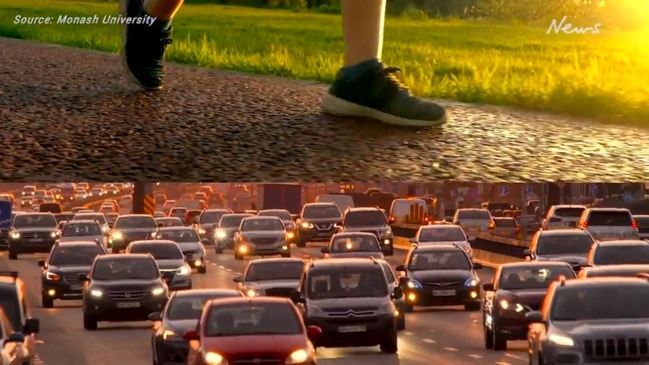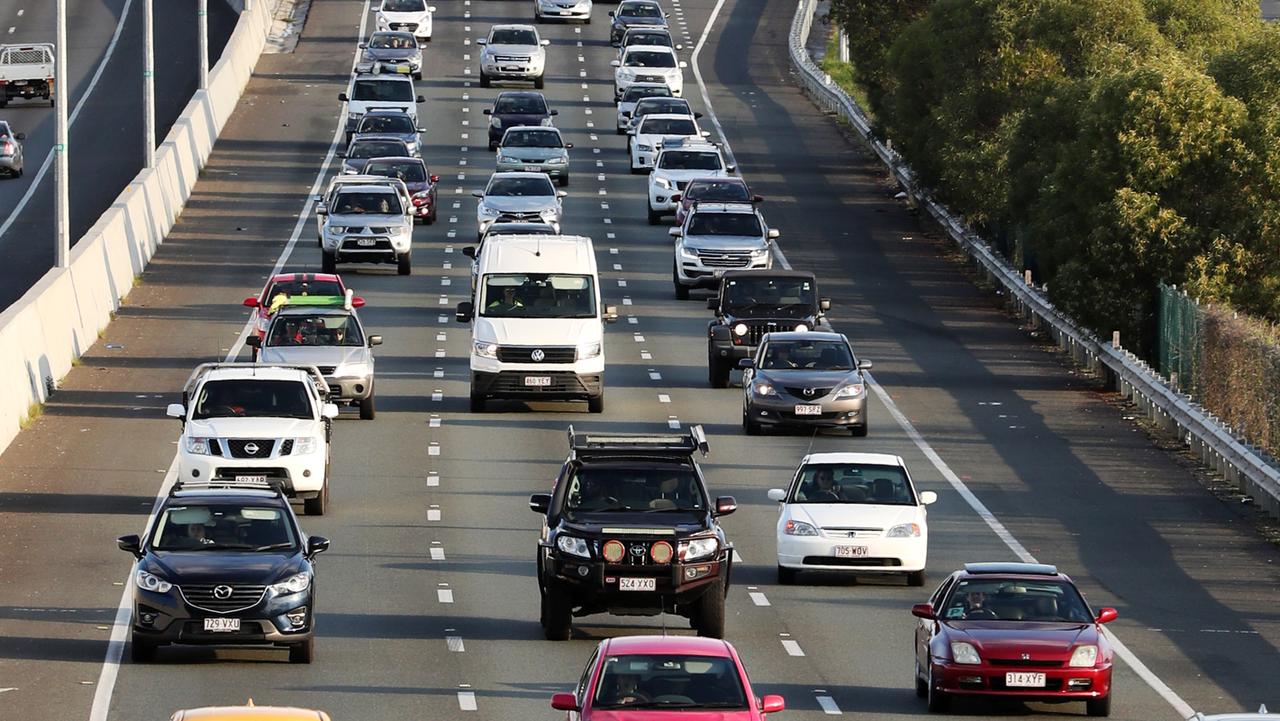Cleaner, greener cities, one step at a time
Host of Coffs Harbour's Changing Climates series, Dr Sarah Perkins-Kirkpatrick, examines Australia's walkability. Plus, how can more accessible neighbourhoods help to reduce our environmental footprint?# Kicker#WEATHER

Hyperlocal
Don't miss out on the headlines from Hyperlocal. Followed categories will be added to My News.
There's something quite calming about the rhythmic plod of footsteps on the ground.
Putting on your runners, blunnies or thongs and going for a walk is a great way to prepare for the day, and also one of the most effective ways to reduce travel emissions.
Evidence suggests car journeys less than 16km are responsible for around 40 per cent of our transport emissions.
So, switching to walking for shorter journeys could significantly curb our carbon output.
For example, if we each substituted one driving trip a day with walking for 200 days, we could reduce our individual transport emissions by up to 15 per cent per year.
Boosting active transport uptake also incentivises the protection and creation of green spaces, because the more people that walk, the more traffic-free space we need.
This is a great opportunity to nurture biodiversity, reduce air pollution, and provide public places to exercise and chill out.
The health and social benefits of more walkable spaces are extensive too.
Walkable street networks have been correlated with lower rates of respiratory and cardiovascular disease, and linked to improved stress levels, sleep and mental health.
Additionally, neighbourhoods with greater walkability help bring residents together, build cultural identity, develop shared goals and discourage crime.
This has been supported since the 1970s, when research found residents on streets with less traffic had three times more friends among neighbours than those living along busy roads.
The positive ripple effects continue, with people able to save thousands of dollars on transport when walking is made accessible.

Time to step up
However, according to recent census data, only around five per cent of Aussie commuters walk to work - significantly lower than in many European cities.
In Copenhagen for example, 50 per cent of commuters walk or cycle.
Australia's low rates of active transport is in part due to a lack of walkability – an important measure of how accessible our city environments are.
Walkability refers to how friendly an area is for walking, with two kilometres considered 'within walking distance'.

A recent study revealed most Australians do not live in areas that meet walkability and density standards in line with the World Health Organisation physical activity targets.
Research has also found that only around 40 per cent of homes in Sydney are within one kilometre of a supermarket, and within 400m of a frequent public transport stop.
This is significantly lower than other major centres, with 97 per cent of people in Sao Paulo, 96 per cent in Hong Kong, and 87 per cent in Mexico City enjoying shops and restaurants within a short walk of home.
Reimagining our urban environments
Since the start of the COVID-19 pandemic, we've seen an increase in the uptake of active transportation.
This is likely to rise further, with one in three Aussies expected to be actively commuting more in the future.
Redesigning our urban environments could help support this rise and improve the walkability of our cities.
This means establishing higher density neighbourhoods with access to public transport, green spaces, and amenities within a short 15 to 20 minute walk.

In addition to effective land use and planning, there are many other strategies our communities can utilise to disincentivse driving and reduce car dependency.
For example, programs in schools that identify safe walking routes and provide cycle training can be particularly effective.
Similarly, changes can be supported within the workplace by installing showers and change rooms, and providing fare rebates to encourage the use of active and public transportation.
Nationally, lowering speed limits and altering road rules can help ensure a safer journey for pedestrians and cyclists.
Building light-reflective footpaths, and connecting walking routes to public transport stops can also help improve safety and accessibility - particularly for women, children and people with disability.
Ultimately, walking is the most accessible and sustainable form of transport.
Going the extra mile to make active transport the new normal will help our communities flourish, and benefit the environment, our health and our pockets.
Want more information on how your climate is changing? Join the conversation on Twitter.
Dr Sarah Perkins-Kirkpatrick is a climate scientist at the University of New South Wales.
This column is part of a collaboration between Monash University and News Corp to deliver hyperlocal weather and climate information.


